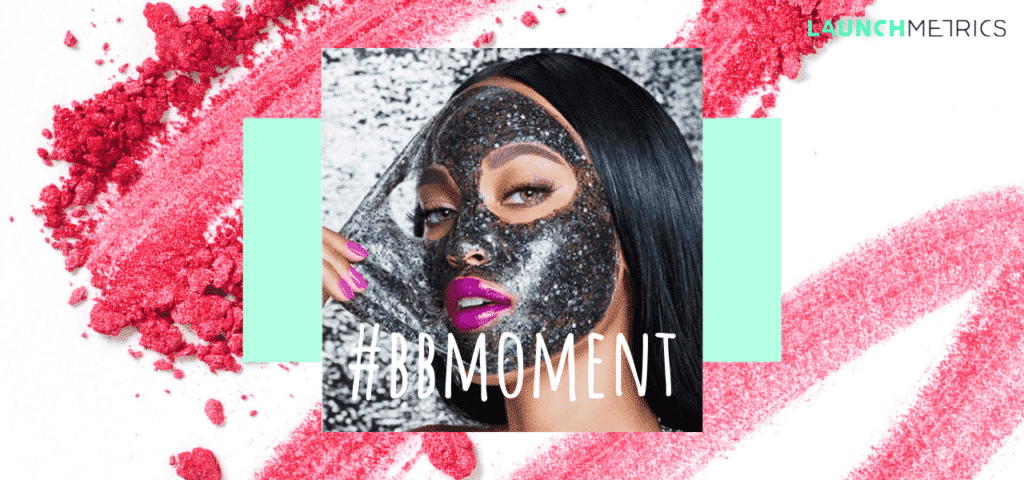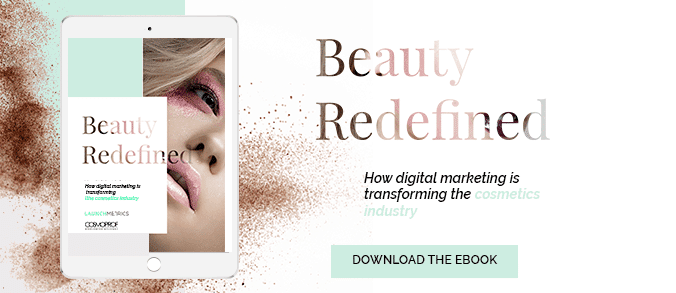Over the past few years the beauty industry has boomed, our feeds filled with how-to videos, makeup tutorials and seemingly endless types of face masks. Beauty influencers have also dominated social media, with ‘gurus’ such as Jeffree Star amassing almost 15M followers on his YouTube channel alone.
Now, viral beauty products are constantly being released, filmed and talked about - all thanks to their brand’s digital marketing strategies - the focus of the second installment in our #BBMoment series. So, how does a cleanser become a holy grail beauty product or a face mask become ‘viral trend’? We’ve compiled a list of five brands' holy grail beauty products and how digital strategy helped them achieve this status.
5 holy grail beauty products went viral thanks to digital strategy
Glossier's Milky Jelly Cleanser
One thing Glossier knows how to nail is customer consideration. Founder of the brand and beauty blog ‘Into the Gloss’, Emily Weiss, set a social media trend by encouraging fans to post images of their bathroom ‘top shelves’ under the hashtag ‘#itgtopshelfie’ (the tag currently has over 37.4k posts). After realising none of the ‘top shelfies’ featured cleansers, Glossier started developing the Milky Jelly Cleanser. From start to finish the campaign closely interacted with consumers, in a clever way to build up buzz within the Glossier community. This is something the brand heavily relies on for any campaign release considering 79% of their sales in 2017 were organic and peer-to-peer.
Glossier’s digital strategy focuses mainly on micro-influencers and word-of-mouth. The brand has its own army of reps, made up of Glossier superfans, fostering what former Glossier president, Henry Davis refers to as a “people-powered ecosystem.” Their digital strategy for creating cult beauty products takes advantage of the relationships they have cultivated, relying on user-generated content for their user-generated products, like the Milky Jelly Cleanser. As Davis puts it, “when your friend says 'you have to try this thing', you listen. You cannot buy that much goodwill with all the advertising and the best creatives in the world.”
Milk Makeup's Blur Stick
Milk Makeup pride themselves on championing inclusivity in the beauty industry, and this campaign for the product that put their name on the map was no exception. Described as a “Snapchat filter for your face,” Milk’s Blur stick was the hero beauty product of their #BlurTheLines campaign. The campaign was a partnership with ‘Very Good Light’ founder, David Yi, and part of Milk Makeup's “Live Your Look” series. Creative director Georgie Greville and Yi, featured “as many angles of gender as possible with a focus on line-blurring individuals.”
#BlurTheLines gave a voice to those who are often unconsidered in the beauty industry, encouraging followers to post their own photos using the blur stick under Milk's branded hashtags. In hand with this UGC strategy, Milk Makeup partnered with male beauty influencers such as Thomas Halbert to push the popular beauty product, his video on the Blur Stick alone racking up over 170k views.
GLAMGLOW's Glittermask
GLAMGLOW’s Glittermask was practically built for social media. In their digital campaign for the peel-off mask, the viral beauty product was marketed heavily through influencer partnerships and Instagram giveaways. During the time period that the mask was released, GLAMGLOW’s earned media value saw a 54% year over year increase. The success was mainly down to the product’s ideal marketability translation in to video content. Beauty influencer, Jeffree Star racked up a total of 2.2M views on his review and demo of the product, and the brand appear in 89k videos in organic YouTube searches.
Although GLAMGLOW saw the most effective returns on influencer partnerships, they also have a ‘Glambassadors’ social community, where they frequently encourage user-generated content in order to increase visibility across social media. Finally, the brand makes a notable effort to engage and reply to every social media conversation their customers start, as a way to maintain their online community and authenticity.
Morphe's James Charles collaboration
A classic cult brand coveted by beauty influencers, Morphe Cosmetics’ collaboration with James Charles saw one of the beauty brand’s highest e-commerce days to date. Most of Morphe’s advertising strategy revolves around influencer marketing. As a result of the release of the James Charles X Morphe palette, their website traffic more than doubled. The cult favourite beauty product was mostly marketed by the influencer himself, cutting costs for the brand on ad spending, and was heavily pushed on his YouTube channel, which has over 15M subscribers.
The benefit of a digital campaign strategy closely linked to an All-Star Influencer like James Charles is clearly seen by the comparison of engagement rates on the @morphebrushes Instagram page. When featured, Charles draws up an average of around 600K likes compared to their other posts which rest around 100-200k. Additionally, 3 out of the 5 top keywords associated with organic searches for Morphe Cosmetics, include the words ‘James Charles.’
Frank Body's Coffee Scrub
If you want the perfect example of how user generated content can really build a brand from scratch, look no further than Frank Body. The Australian company are arguably just as well known for their hugely successful marketing strategy and branding as they are for their cult coffee scrub. In promoting their holy grail beauty product, Frank Body used a branded hashtag strategy in order to accumulate content and advertising congruently. Giving attention first to Micro-Influencers, the brand distributed samples encouraging people to post their coffee scrub selfies under their hashtags ‘letsbefrank’ and ‘thefrankeffect.’ Co-founder Jess Hatzis said of their digital marketing strategy: “We had a very deliberate UCG strategy from day 1, and now have over 100,000 consumer generated images living under our branded hashtags.”
Frank body as a brand assumes a personality, posting content aimed directly at millenials, from memes to inspirational coffee scrub success stories. By associating themselves with local micro-influencers, and pushing cheeky, conversational and relatable branding, Frank Body was able to establish trust with their consumers. This allowed them to generate a high volume of user generated content, as a result turning their small $5000 investment in to $20m in brand sales.
In the beauty industry, there appears to be a move towards digital strategies that are cultivated specifically with the consumer in mind. Whilst brands capitalise on the huge audiences that beauty influencers such as James Charles bring with them in their advertising, the current demand for brand transparency is answered by new user-generated-content focused strategies, that include the customer in their marketing. Creating brand communities allows peer-to-peer recommendations and authenticity surrounding products, which has allowed these beauty brands and their products to achieve ‘viral’ or ‘cult’ status.
For more on the marketing landscape in the beauty industry, download a free copy of Beauty Redefined.
*Header Image by @glamglow

